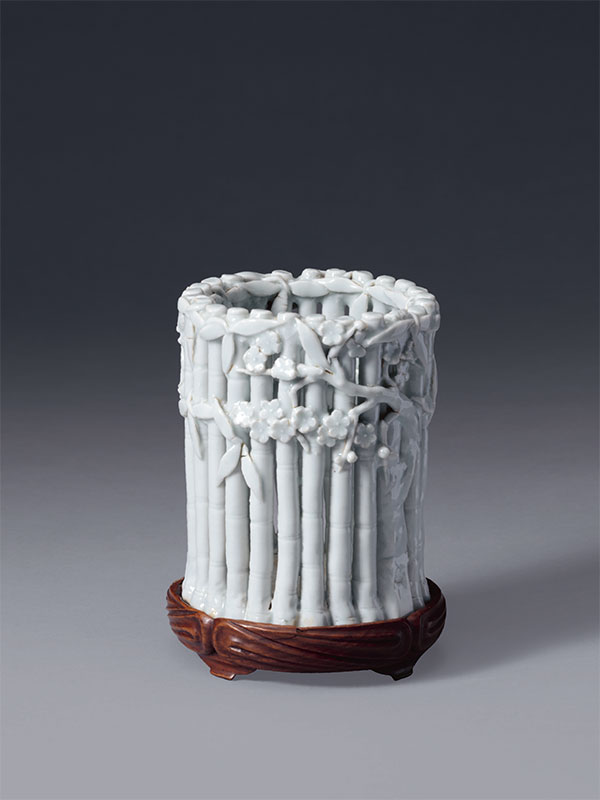White porcelain brush pot
China, Qing dynasty, Kangxi period, 1662-1722
A white porcelain brush pot, naturalistically modelled in the form of a cluster of bamboo stems, each stem finely detailed with space left in between, all rising from the slightly splayed foot. The exterior is further applied with bamboo, pine, and prunus, encircling the pot as if holding the bamboo stems together. The pot is covered inside and out with transparent glaze. The unglazed base is moulded with a central chrysanthemum flower.
Made in a wide variety of shapes, sizes, and materials from the Ming dynasty onwards, brush pots were essential objects on the scholar’s desk. The present type would not only have been desirable for its association with nature, the greatest source of inspiration for the literati scholar, but also for its auspicious symbolism. Together, bamboo, pine, and prunus are known as the ‘Three Friends of Winter’ suihan sanyou, representing strength and endurance.[1] White examples of the present type are rare, for turquoise glazed examples seem more common. A similar bamboo-shaped brush pot with a turquoise glaze is in the collection of the Rijksmuseum, Amsterdam.[2]
Provenance:
Formerly in an old Dutch private collection
- Bartholomew, T. T. Hidden Meanings in Chinese Art, San Franscisco, 2006, p. 210
- Jg, C. J. A. and Campen van, J., Chinese Ceramics in the Collection of the Rijksmuseum, Amsterdam: The Ming and Qing Dynasties, London, 1997, pl. 262, p. 232

